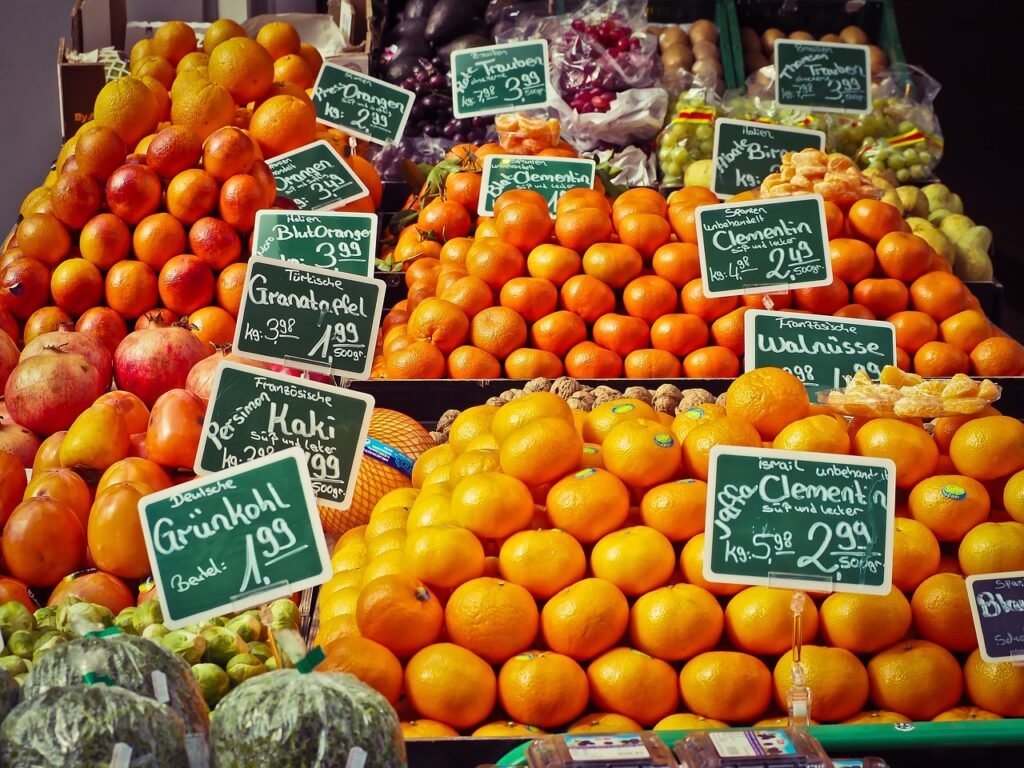
Sustainable Eating: Farm-to-Table Recipes for a Greener Lifestyle
In a world where environmental concerns are increasingly pressing, adopting sustainable practices has become paramount. One area where individuals can make a significant impact is through their food choices. Sustainable eating, particularly the farm-to-table approach, offers a powerful solution for reducing our carbon footprint and promoting a greener lifestyle.

This article delves into the concept of sustainable eating, explores the farm-to-table movement, provides insightful tips on selecting locally sourced ingredients, offers a variety of delicious farm-to-table recipes for all meals, emphasizes the importance of incorporating seasonal produce, discusses sustainable protein sources, offers creative ways to minimize food waste, and provides practical tips for sustainable eating on a budget. By embracing sustainable eating, we can not only make a positive difference in our own lives but also contribute to a more sustainable and environmentally friendly world.
1. Introduction: Embracing Sustainable Eating for a Greener Lifestyle
Why Sustainable Eating Matters
We all know that eating our veggies is important, but have you ever stopped to consider the impact of our food choices on the environment? Sustainable eating is about more than just fueling our bodies; it’s about being mindful of the resources and processes involved in food production. By making conscious choices about what we eat, we can reduce our carbon footprint and contribute to a greener lifestyle.
The Role of Farm-to-Table Approach in Sustainability
Enter the farm-to-table approach. This food movement champions the idea of sourcing ingredients directly from local farmers and suppliers. By cutting out the middlemen and long transportation routes, farm-to-table not only supports local economies but also reduces the environmental impact of our meals. When we embrace farm-to-table eating, we can bask in the knowledge that our food comes from trusted sources and is grown with sustainable practices in mind.
2. Understanding the Farm-to-Table Movement

Defining Farm-to-Table
At its core, farm-to-table means shortening the distance between the farm and your plate. It emphasizes the importance of knowing where your food comes from and building relationships with local farmers. By buying directly from the source, you can enjoy fresher, seasonal ingredients that are bursting with flavor and nutrients.
The Benefits of Farm-to-Table Eating
Besides the joy of savoring delicious food, farm-to-table eating offers a myriad of benefits. First and foremost, it supports local farmers and helps sustain their businesses, contributing to the preservation of farmland and the rural way of life. Additionally, eating locally reduces the demand for long-haul transportation, which means less fuel consumption and lower greenhouse gas emissions. Plus, since local produce doesn’t have to endure lengthy journeys, it often arrives on our plates at the peak of ripeness, ensuring optimal taste and nutritional value.
Challenges and Misconceptions
While farm-to-table eating may sound idyllic, it’s not without its challenges and misconceptions. Some argue that it’s expensive or difficult to find local ingredients, but with a little effort, it’s more accessible than you might think. By exploring farmers’ markets, food cooperatives, and even starting your own backyard garden, you can take steps towards incorporating farm-to-table principles into your lifestyle. Remember, every small choice counts!
3. Choosing Locally Sourced Ingredients: Benefits and Tips
The Importance of Locally Sourced Ingredients
When you choose locally sourced ingredients, you not only support your community but also make a positive impact on the environment. By reducing the distance your food travels to reach your plate, you contribute to lower carbon emissions, enhance food security, and promote sustainable agricultural practices.

Identifying Local Food Sources
Finding local food sources may require a bit of detective work, but the rewards are well worth it. Start by exploring farmers’ markets, community-supported agriculture (CSA) programs, and local grocery stores that emphasize locally made or grown products. You can also connect with nearby farmers through online directories or join local food-focused social media groups for recommendations.
How to Support Local Farmers and Suppliers
Supporting local farmers and suppliers goes beyond purchasing their products. Attend local farm events and workshops, participate in CSA programs, and even volunteer at farms to learn more about the food production process. By building relationships and understanding the challenges faced by local farmers, you can become an advocate for sustainable agriculture in your community.
4. Farm-to-Table Recipes for Every Meal: Breakfast, Lunch, and Dinner
Breakfast Recipes
Start your day off right with farm-fresh flavors. Whip up a veggie-packed omelet using locally sourced eggs and seasonal vegetables, or savor a bowl of overnight oats topped with a medley of locally grown berries. The options are endless when you have the freshest ingredients at your fingertips.
Lunch Recipes
For a midday meal that satisfies both your taste buds and eco-consciousness, try a vibrant salad featuring locally grown greens and a tangy homemade vinaigrette. Or how about a hearty sandwich made with freshly baked bread and fillings sourced straight from nearby farms?
Dinner Recipes
Elevate your dinner game by cooking up dishes that showcase the best of what your local region has to offer. Whether it’s a comforting bowl of farm-to-table chili made with locally raised beef or a vibrant vegetable stir-fry featuring seasonal produce, farm-to-table dinners are sure to impress.
So, embrace sustainable eating and dive into the farm-to-table movement. By making thoughtful choices about what you eat and supporting local farmers, you can savor delicious meals while nourishing both your body and the planet. Bon appétit!5. Incorporating Seasonal Produce into Your Sustainable Eating Journey
5. Benefits of Seasonal Eating
Eating seasonally not only supports local farmers, but it also comes with a host of benefits for your health and the environment. Seasonal produce is harvested at its peak, ensuring maximum flavor and nutritional value. Plus, since it doesn’t have to travel long distances to reach your plate, it reduces the carbon footprint associated with transportation.
Guidelines for Choosing Seasonal Produce:
Choosing seasonal produce may seem daunting at first, but it’s actually quite simple. Keep an eye out for what’s abundant and fresh in your local farmers’ markets or grocery stores. You can also consult online resources or join community-supported agriculture (CSA) programs, which provide a selection of seasonal produce directly from local farms.
Recipes Highlighting Seasonal Ingredients:
Embrace the flavors of the season with these delicious recipes that make the most of seasonal ingredients. From vibrant salads with summer berries to hearty stews bursting with winter root vegetables, these dishes will not only make your taste buds happy but also contribute to a greener lifestyle.
6. Exploring Sustainable Protein Sources: Plant-based and Ethical Animal Products

The Environmental Impact of Protein Consumption:
We all need protein in our diets, but the choices we make can have a significant environmental impact. Traditional animal agriculture is a major contributor to greenhouse gas emissions, deforestation, and water pollution. By exploring alternative protein sources, we can reduce our environmental footprint and still meet our nutritional needs.
Plant-based Protein Sources:
Plant-based protein options like legumes, tofu, tempeh, and quinoa are not only sustainable but also rich in nutrients. They offer a variety of flavors and textures, making them versatile ingredients in a wide range of recipes. Whether you’re a devoted vegan or just looking to incorporate more plant-based meals into your diet, these protein sources are a delicious and eco-friendly choice.
Ethical Animal Products: Choosing Sustainable Meat and Dairy:
If you prefer animal products, there are ways to make more ethical and sustainable choices. Look for labels like Certified Humane, Animal Welfare Approved, or pasture-raised when purchasing meat and dairy. These labels ensure that the animals were raised in a more humane and environmentally responsible manner. Additionally, reducing your overall consumption and opting for smaller portions can also make a difference.
7. Minimizing Food Waste: Creative Ways to Use Leftovers and Scraps
The Issue of Food Waste:
Food waste is a serious problem with significant environmental consequences. When we throw out food, we waste all the resources that went into producing it, including water, energy, and land. By finding creative ways to use leftovers and scraps, we can minimize food waste and make the most of what we have.
Reducing Food Waste at Home:
Simple changes in our daily habits can go a long way in reducing food waste. Plan your meals ahead, make a shopping list, and only buy what you need. Store food properly to extend its freshness, and don’t be afraid to repurpose ingredients that are nearing expiration. By being more conscious of our consumption and taking proactive steps, we can make a significant impact.
Innovative Recipes for Using Leftovers and Scraps:
Leftovers and scraps don’t have to be boring! Transform them into delicious meals with these innovative recipes. Turn stale bread into croutons or breadcrumbs, use vegetable peels to make flavorful broths, and incorporate leftover cooked grains into savory fritters or salads. These recipes will not only help you reduce food waste but also inspire your culinary creativity.

8. Sustainable Eating on a Budget: Tips for Affordability and Accessibility
Overcoming the Perception of High Costs:
Sustainable eating doesn’t have to break the bank. While some organic or specialty products may have higher price tags, there are plenty of affordable options available. By prioritizing seasonal produce, buying in bulk, and cooking from scratch, you can make sustainable choices without stretching your budget.
Budget-friendly Sustainable Eating Tips:
Eating sustainably on a budget is all about making conscious choices. Plan your meals around affordable ingredients, embrace plant-based meals, and consider growing your own herbs or vegetables if you have space. Be mindful of portion sizes to reduce waste and make the most out of each meal. With a little creativity and resourcefulness, sustainable eating can be accessible to everyone.
Accessible Options:
Even if you don’t have access to farmers’ markets or specialty stores, there are still ways to eat sustainably. Look for local produce at your regular grocery store, explore frozen or canned options when fresh isn’t available, and consider joining community gardens or co-ops. Sustainable eating is about making the best choices with the resources available to you, no matter where you are.

By embracing sustainable eating practices and incorporating farm-to-table recipes into our daily lives, we can contribute to a greener and more sustainable future. From choosing locally sourced ingredients and seasonal produce to reducing food waste and exploring sustainable protein sources, every small step we take can make a significant impact. By adopting these principles and making conscious choices about our food, we can nourish our bodies, support local farmers, and contribute to a healthier planet. So, let’s embark on this sustainable eating journey together and pave the way for a greener lifestyle for generations to come.
FAQ
1. What is the farm-to-table movement?
The farm-to-table movement emphasizes the use of locally sourced ingredients and promotes a direct connection between farmers and consumers. It aims to reduce the carbon footprint associated with food production and support local farmers and sustainable agricultural practices.
2. Is sustainable eating more expensive?
While sustainable eating can sometimes be associated with higher costs, it doesn’t have to break the bank. By prioritizing seasonal produce, reducing food waste, and exploring budget-friendly options, sustainable eating can be accessible and affordable for everyone.
3. How can I find locally sourced ingredients?
You can find locally sourced ingredients by visiting farmers markets, joining a community-supported agriculture (CSA) program, or directly contacting local farmers. Additionally, many grocery stores now offer a variety of locally sourced products, which are often labeled as such.
4. Can I still enjoy meat and dairy while eating sustainably?
Absolutely! While reducing meat and dairy consumption can have environmental benefits, it is possible to make sustainable choices within these categories. Opting for ethically raised animal products and incorporating more plant-based protein sources into your diet can be steps towards a more sustainable eating approach.

